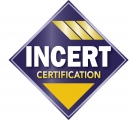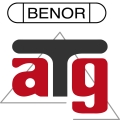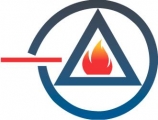CE marking
Several European directives make up the legal framework aimed at achieving a single market of products in the European Union, without hindering or reducing their existing protection levels. Many products, or rather product families, can no longer be released on the market if they do not meet the requirements of these directives and of the related harmonised standards.
These products must now carry the CE marking to be sold on the European market.
ANPI is recognised as a Product Certification Body, Inspection Body and Test Laboratory under the terms of the EU Construction Product Regulation (305/2011), and as a Competent Body and Test Laboratory under the terms of the EMC directive (89/336/CEE), under number NB 1134.
What is the CE marking?
The mandatory CE marking is a declaration from the manufacturer, which certifies that their product meets essential safety, health, environment and consumer protection requirements, as defined by harmonised standards. After the deadline set by the Commission, the product must carry the CE marking in order to be released on the market of the European Economic Area.
The European Commission has posted a short video clip on the CE marking for construction products.
Watch in french "Forger la confiance dans le secteur de la construction":
or in Dutch: "Vertrouwen bouwen in de bouwsector":
or in English "Building trust in the construction sector":
Several regulations and directives concern fire or intrusion safety equipment and products.
Which European directives?
Regulation 30/2011, regarding construction products, especially addresses fixed fire protection equipment and installations.
Other directives, such as the EMC, low voltage or pressure equipment directives, may also apply to safety equipment.
- Regulation (EU) No 305/2011 of the European Parliament and of the Council of 9 March 2011 laying down harmonised conditions for the marketing of construction products and repealing Council Directive 89/106/EEC
- Directive 89/336/EEC of the Council of 3 May 1989 regarding the approximation of the laws of the Member States relating to electromagnetic compatibility
- Directive 73/23/EEC of the Council of 19 February 1973 regarding the harmonisation of the laws of the Member States relating to electrical equipment designed for use within certain voltage limits
- Directive 87/404/EEC of the Council of 25 June 1987 regarding the harmonisation of the laws of the Member States pertaining to simple pressure vessels
Harmonised standards?
The Official Journal of the European Union regularly publishes lists of harmonised standards depending on these directives and the end of the transition period for each product. After this deadline, the product must carry the CE marking in order to be released on the market of the European Economic Area.
Several compliance systems (4+2) are outlined. These systems determine the parties involved in the testing, checking and monitoring tasks. Therefore, each harmonised standard defines the compliance system required for a product or family of products in its ZA Annex.
For example, fire detection and extinguishing installations must meet compliance system 1 and are therefore not only subject to tests and checks conducted by the manufacturer, but also to initial tests, initial factory inspection, and production checks in the factory, as well as ongoing monitoring, assessment and approval of the factory inspection by ANPI or another notified body for these products.
You will find a list of harmonised standards and the transposition deadline on the ec.europa.eu website:
CE marking and certification
The CE marking is not a certification. Certifications such as ANPI, BOSEC and BENOR are requested on a voluntary basis and attest to the quality of products and their compliance with additional technical specifications.
When purchasing a product, check for the CE marking, and demand voluntary quality certification.
CE-CPR Rules: ![]() certification_rules_pr_fire_ce-cpr.pdf
certification_rules_pr_fire_ce-cpr.pdf






